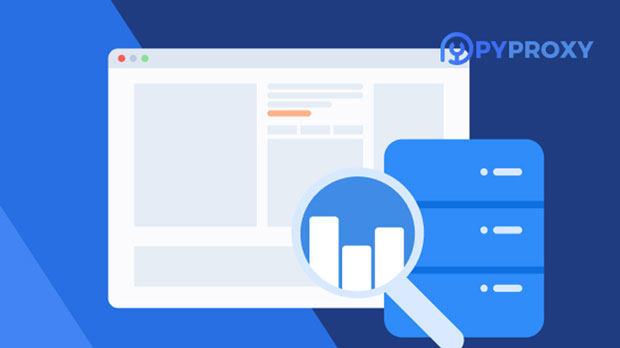Difference between socks5 proxy and HTTP proxy, what should Chrome users choose?
When it comes to browsing the internet with additional privacy and security, many users turn to proxies. SOCKS5 and HTTP proxies are two commonly used types, but they differ significantly in their functionality, speed, security, and usage scenarios. Understanding these differences is crucial, especially for Chrome users, who may be looking to optimize their online experience. In this article, we’ll break down the key differences between SOCKS5 and HTTP proxies and provide guidance on which option to choose based on your needs. What Is a Proxy and Why Do You Need One?Before diving into the specifics of SOCKS5 and HTTP proxies, it’s important to understand what a proxy is and why it can be useful. A proxy acts as an intermediary server between your device and the internet. When you connect to a website, the request is first sent to the proxy server, which then forwards it to the destination server. The website responds to the proxy, which in turn sends the response back to you.Proxies can be used for various purposes, such as hiding your IP address, improving online privacy, bypassing geographical restrictions, or improving connection speed by caching content. Different types of proxies provide varying levels of functionality and performance, which is where the difference between SOCKS5 and HTTP proxies comes into play. socks5 proxy: A Deep DiveSOCKS5 is a versatile, low-level protocol that allows data to flow between a client and a server through a proxy. Here’s a breakdown of its key characteristics:1. Supports Various Protocols and Applications SOCKS5 can handle a wide range of internet traffic, including HTTP, FTP, and even torrenting. It is not limited to web traffic, making it an ideal choice for users who want to use a proxy with different types of applications. For example, users who need to run P2P (peer-to-peer) applications like torrenting clients can benefit from SOCKS5.2. Better Performance and Speed Since socks5 proxies work at a lower level of the network stack, they tend to provide faster speeds compared to HTTP proxies. They don’t alter the data packets being sent or received, meaning there is less overhead and, in many cases, lower latency.3. Enhanced Security and Flexibility SOCKS5 supports authentication, meaning users can set up user/password credentials to restrict access to the proxy. Furthermore, SOCKS5 can handle different types of traffic, including UDP, which makes it more flexible for various use cases.4. No Data Modification Unlike HTTP proxies, SOCKS5 does not modify or analyze the data passing through it. It simply forwards the traffic without interference, which can be beneficial in terms of privacy and security, as no data manipulation occurs.HTTP Proxy: A Simplified OverviewAn HTTP proxy, as the name suggests, is designed specifically to handle HTTP traffic, which is the primary protocol for web browsing. Here are the key characteristics of HTTP proxies:1. Limited to Web Traffic HTTP proxies are designed to handle only HTTP and HTTPS traffic. This means they are not suitable for other types of applications like email clients or file-sharing software. If you're only interested in browsing the web, an HTTP proxy might suffice.2. Faster for Web Browsing Since HTTP proxies are designed solely for web traffic, they can be faster for browsing compared to SOCKS5, as they don’t need to handle other types of traffic or additional protocols. However, they may be slower when compared to SOCKS5 for more complex use cases, like streaming or file-sharing.3. Content Filtering and Caching HTTP proxies are often used for content filtering, caching, and blocking access to specific websites or services. This makes them ideal for enterprise environments where network traffic needs to be controlled or filtered. 4. Data Modification An HTTP proxy may modify or filter the data it processes. For instance, it may strip out certain cookies, block advertisements, or cache content to speed up load times for frequently visited websites. This can be both beneficial and limiting, depending on your privacy and browsing preferences.Key Differences Between SOCKS5 and HTTP ProxiesNow that we have a basic understanding of SOCKS5 and HTTP proxies, let's compare them across several dimensions:1. Traffic Support SOCKS5 supports a broader range of internet protocols, such as HTTP, FTP, SMTP, and UDP, while HTTP proxies are limited to handling HTTP/HTTPS web traffic.2. Speed and Performance SOCKS5 is generally faster than HTTP proxies for non-web traffic, thanks to its ability to handle multiple types of protocols and provide a direct, less-interfered data flow. However, HTTP proxies may still be faster for simple web browsing due to the lower overhead involved.3. Security and Privacy SOCKS5 offers better security and privacy options, such as user authentication and encryption. HTTP proxies, on the other hand, may alter or log web traffic, which could raise privacy concerns, especially if the proxy provider has access to this data.4. Use Case Flexibility SOCKS5 is more versatile and suitable for a wider range of applications, including web browsing, torrenting, gaming, and more. HTTP proxies are specialized for web traffic, making them suitable only for browsing and web-related services.How to Choose Between SOCKS5 and HTTP Proxy for Chrome Users?For Chrome users, the choice between SOCKS5 and HTTP proxies largely depends on your specific needs and use cases. Let’s break down which proxy might be best suited for different scenarios:1. For General Web Browsing If your primary goal is to browse the web while maintaining privacy or accessing geo-restricted content, an HTTP proxy could be a sufficient choice. HTTP proxies are easy to configure within Chrome’s settings, and for simple browsing tasks, they can provide a fast and reliable experience.2. For Torrenting or P2P Applications If you plan to use a proxy for torrenting or other P2P applications, SOCKS5 is the better option. SOCKS5 supports UDP traffic, which is essential for torrenting and other similar applications. Additionally, it doesn’t modify the traffic, ensuring a smoother and more private experience.3. For Enhanced Security and Privacy If security and privacy are top concerns, SOCKS5 is the recommended choice. It offers better encryption options, and since it doesn't alter or log the data passing through it, it provides a higher level of anonymity. However, remember that encryption in SOCKS5 might depend on the proxy configuration, so it's essential to choose a provider that supports encrypted connections.4. For Content Filtering and Caching If you need to block specific websites, manage network traffic, or cache frequently visited web pages, an HTTP proxy is more appropriate. Many businesses use HTTP proxies for these purposes, and they can help speed up browsing by caching common content.Conclusion: Making the Right Choice for ChromeUltimately, both SOCKS5 and HTTP proxies serve different purposes, and your decision should depend on your specific needs. SOCKS5 is more versatile, secure, and efficient for various types of internet traffic, making it ideal for users who require privacy, torrenting support, or enhanced flexibility. HTTP proxies, however, remain a solid option for users focused solely on web browsing and seeking a simple, fast, and cost-effective solution.For Chrome users, understanding the nuances of these proxy types will help you optimize your browsing experience. If you need a proxy that can handle a wide range of applications with minimal interference, SOCKS5 is the way to go. If you’re mainly looking for a proxy to improve your web browsing experience, an HTTP proxy may meet your needs perfectly.
2025-01-02
























































